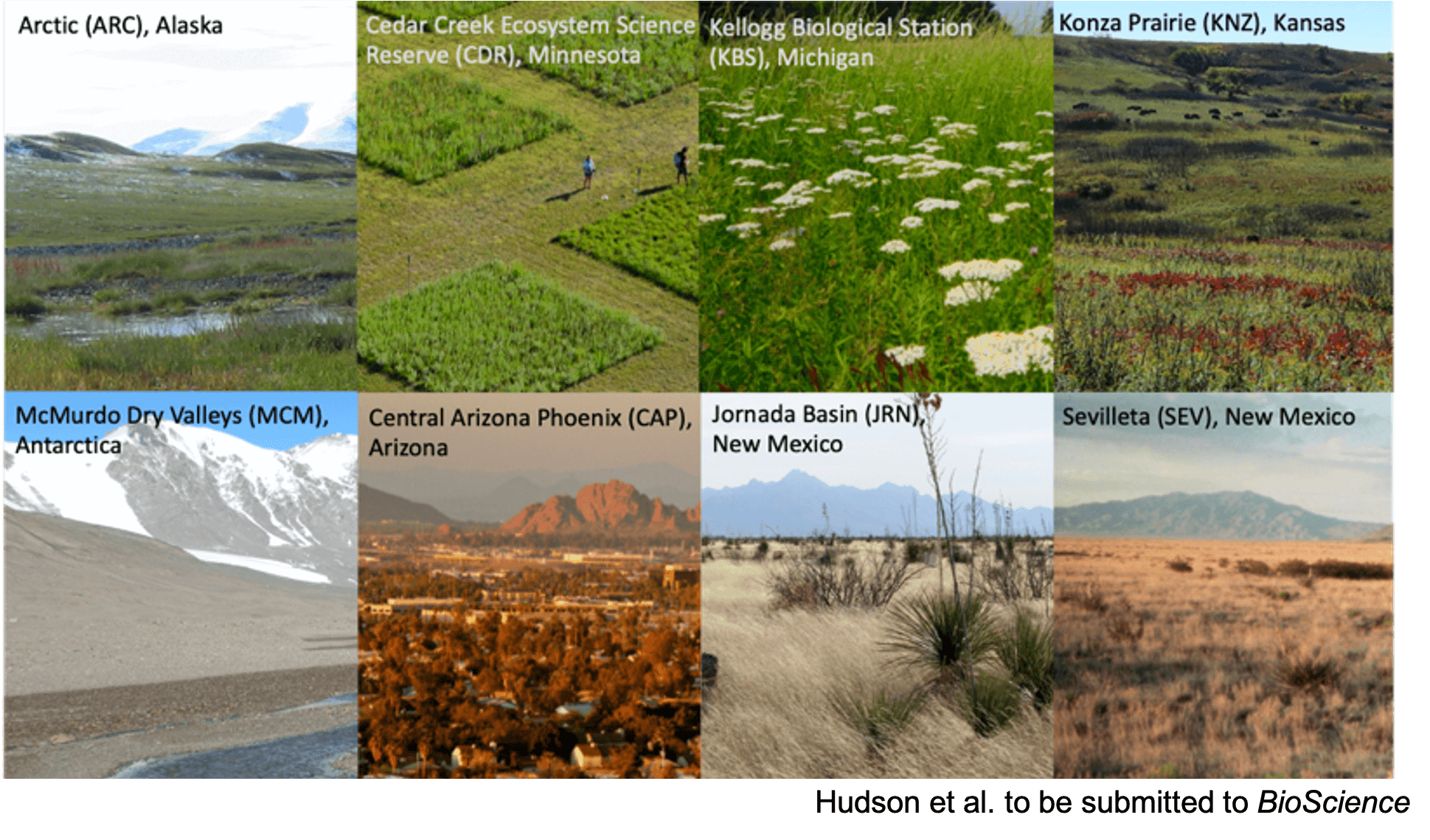By: Amy Hudson | 04/15/2021 USDA-ARS, SCINet Postdoctoral Fellow, Las Cruces, NM

Rising global temperatures have cascading effects on Earth’s agro-ecosystems. To better understand and contextualize these effects, we leveraged the long records of observational and experimental data collected across a suite of sites in the Long-Term Ecological Research (LTER) Network, including 2 Long Term Agroecosystem Research sites. Debra Peters and I organized a large team of researchers from eight dryland sites across a wide geographic and production gradient (shown by images above). Drylands receive low amounts of rainfall, and plants at these sites are limited in how much they can grow by the amount of water available. Warming amplifies water limitations at these sites, and increases the frequency and intensity of wildfires, dust, and flooding events. We highlight and compare the importance of these multiple drivers to primary production with feedbacks to global climate in an upcoming issue in BioScience special. Kellogg Biological Station and Jornada Experimental Range are two sites from this study that are also part of the 18-site Long-Term Agroecosystem Research (LTAR) Network.
Climate can also drive the spatial spread of livestock disease, such as Vesicular Stomatitis (VS), that I am studying with the VSV Grand Challenge group, whose multi-disciplinary members include ARS scientists Debra Peters, Luis Rodriguez, Lee Cohnstaedt, Barbara Drolet, Justin Derner, and Emile Elias along with our collaborator from USDA APHIS, Angela Pelzel-McCluskey. The virus, VSV, enters the US from Mexico every few years and then spreads to cover much of the western US with a tendency towards regions that are cooler and wetter the following year. These results are consistent with the characteristics of habitat conditions and life-cycles of the black flies and biting midges insect vectors for this disease. Large-scale modes of climate variability, such as the El Niño Southern Oscillation (ENSO), can drive changes in regional climate to influence the location and timing of VSV across the Mexico border. The SCINet HPC resources allow us to use a large number of datasets (>400) in AI frameworks towards better prediction of the spread of VSV as a model for predictive disease ecology across the US.

